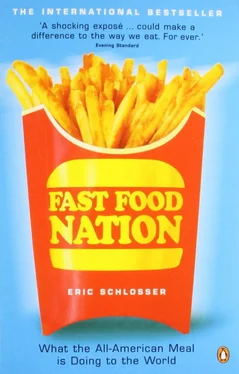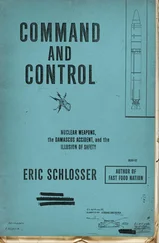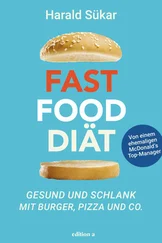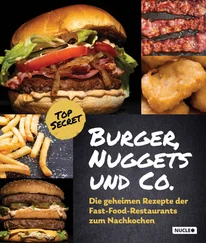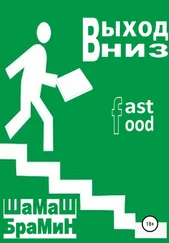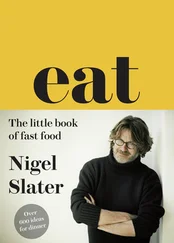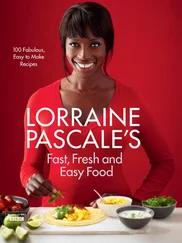The fantasy world of McDonaldland borrowed a good deal from Walt Disney’s Magic Kingdom. Don Ament, who gave McDonaldland its distinctive look, was a former Disney set designer. Richard and Robert Sherman — who had written and composed, among other things, all the songs in Disney’s Mary Poppins , Disneyland’s “It’s a Great, Big, Beautiful Tomorrow” and “It’s a Small World, After All” — were enlisted for the first McDonaldland commercials. Ronald McDonald, Mayor McCheese, and the other characters in the ads made McDonald’s seem like more than just another place to eat. McDonaldland — with its hamburger patch, apple pie trees, and Filet-O-Fish fountain — had one crucial thing in common with Disneyland. Almost everything in it was for sale. McDonald’s soon loomed large in the imagination of toddlers, the intended audience for the ads. The restaurant chain evoked a series of pleasing images in a youngster’s mind: bright colors, a playground, a toy, a clown, a drink with a straw, little pieces of food wrapped up like a present. Kroc had succeeded, like his old Red Cross comrade, at selling something intangible to children, along with their fries.
TWENTY-FIVE YEARS AGO, only a handful of American companies directed their marketing at children — Disney, McDonald’s, candy makers, toy makers, manufacturers of breakfast cereal. Today children are being targeted by phone companies, oil companies, and automobile companies, as well as clothing stores and restaurant chains. The explosion in children’s advertising occurred during the 1980s. Many working parents, feeling guilty about spending less time with their kids, started spending more money on them. One marketing expert has called the 1980s “the decade of the child consumer.” After largely ignoring children for years, Madison Avenue began to scrutinize and pursue them. Major ad agencies now have children’s divisions, and a variety of marketing firms focus solely on kids. These groups tend to have sweet-sounding names: Small Talk, Kid Connection, Kid2Kid, the Gepetto Group, Just Kids, Inc. At least three industry publications — Youth Market Alert, Selling to Kids , and Marketing to Kids Report — cover the latest ad campaigns and market research. The growth in children’s advertising has been driven by efforts to increase not just current, but also future, consumption. Hoping that nostalgic childhood memories of a brand will lead to a lifetime of purchases, companies now plan “cradle-to-grave” advertising strategies. They have come to believe what Ray Kroc and Walt Disney realized long ago — a person’s “brand loyalty” may begin as early as the age of two. Indeed, market research has found that children often recognize a brand logo before they can recognize their own name.
The discontinued Joe Camel ad campaign, which used a hip cartoon character to sell cigarettes, showed how easily children can be influenced by the right corporate mascot. A 1991 study published in the Journal of the American Medical Association found that nearly all of America’s six-year-olds could identify Joe Camel, who was just as familiar to them as Mickey Mouse. Another study found that one-third of the cigarettes illegally sold to minors were Camels. More recently, a marketing firm conducted a survey in shopping malls across the country, asking children to describe their favorite TV ads. According to the CME KidCom Ad Traction Study II, released at the 1999 Kids’ Marketing Conference in San Antonio, Texas, the Taco Bell commercials featuring a talking chihuahua were the most popular fast food ads. The kids in the survey also liked Pepsi and Nike commercials, but their favorite television ad was for Budweiser.
The bulk of the advertising directed at children today has an immediate goal. “It’s not just getting kids to whine,” one marketer explained in Selling to Kids , “it’s giving them a specific reason to ask for the product.” Years ago sociologist Vance Packard described children as “surrogate salesmen” who had to persuade other people, usually their parents, to buy what they wanted. Marketers now use different terms to explain the intended response to their ads — such as “leverage,” “the nudge factor,” “pester power.” The aim of most children’s advertising is straightforward: get kids to nag their parents and nag them well.
James U. McNeal, a professor of marketing at Texas A&M University, is considered America’s leading authority on marketing to children. In his book Kids As Customers (1992), McNeal provides marketers with a thorough analysis of “children’s requesting styles and appeals.” He classifies juvenile nagging tactics into seven major categories. A pleading nag is one accompanied by repetitions of words like “please” or “mom, mom, mom.” A persistent nag involves constant requests for the coveted product and may include the phrase “I’m gonna ask just one more time.” Forceful nags are extremely pushy and may include subtle threats, like “Well, then, I’ll go and ask Dad.” Demonstrative nags are the most high-risk, often characterized by full-blown tantrums in public places, breath-holding, tears, a refusal to leave the store. Sugar-coated nags promise affection in return for a purchase and may rely on seemingly heartfelt declarations like “You’re the best dad in the world.” Threatening nags are youthful forms of blackmail, vows of eternal hatred and of running away if something isn’t bought. Pity nags claim the child will be heartbroken, teased, or socially stunted if the parent refuses to buy a certain item. “All of these appeals and styles may be used in combination,” McNeal’s research has discovered, “but kids tend to stick to one or two of each that prove most effective… for their own parents.”
McNeal never advocates turning children into screaming, breath-holding monsters. He has been studying “Kid Kustomers” for more than thirty years and believes in a more traditional marketing approach. “The key is getting children to see a firm… in much the same way as [they see] mom or dad, grandma or grandpa,” McNeal argues. “Likewise, if a company can ally itself with universal values such as patriotism, national defense, and good health, it is likely to nurture belief in it among children.”
Before trying to affect children’s behavior, advertisers have to learn about their tastes. Today’s market researchers not only conduct surveys of children in shopping malls, they also organize focus groups for kids as young as two or three. They analyze children’s artwork, hire children to run focus groups, stage slumber parties and then question children into the night. They send cultural anthropologists into homes, stores, fast food restaurants, and other places where kids like to gather, quietly and surreptitiously observing the behavior of prospective customers. They study the academic literature on child development, seeking insights from the work of theorists such as Erik Erikson and Jean Piaget. They study the fantasy lives of young children, then apply the findings in advertisements and product designs.
Dan S. Acuff — the president of Youth Market System Consulting and the author of What Kids Buy and Why (1997) — stresses the importance of dream research. Studies suggest that until the age of six, roughly 80 percent of children’s dreams are about animals. Rounded, soft creatures like Barney, Disney’s animated characters, and the Teletubbies therefore have an obvious appeal to young children. The Character Lab, a division of Youth Market System Consulting, uses a proprietary technique called Character Appeal Quadrant Analysis to help companies develop new mascots. The technique purports to create imaginary characters who perfectly fit the targeted age group’s level of cognitive and neurological development.
Читать дальше
